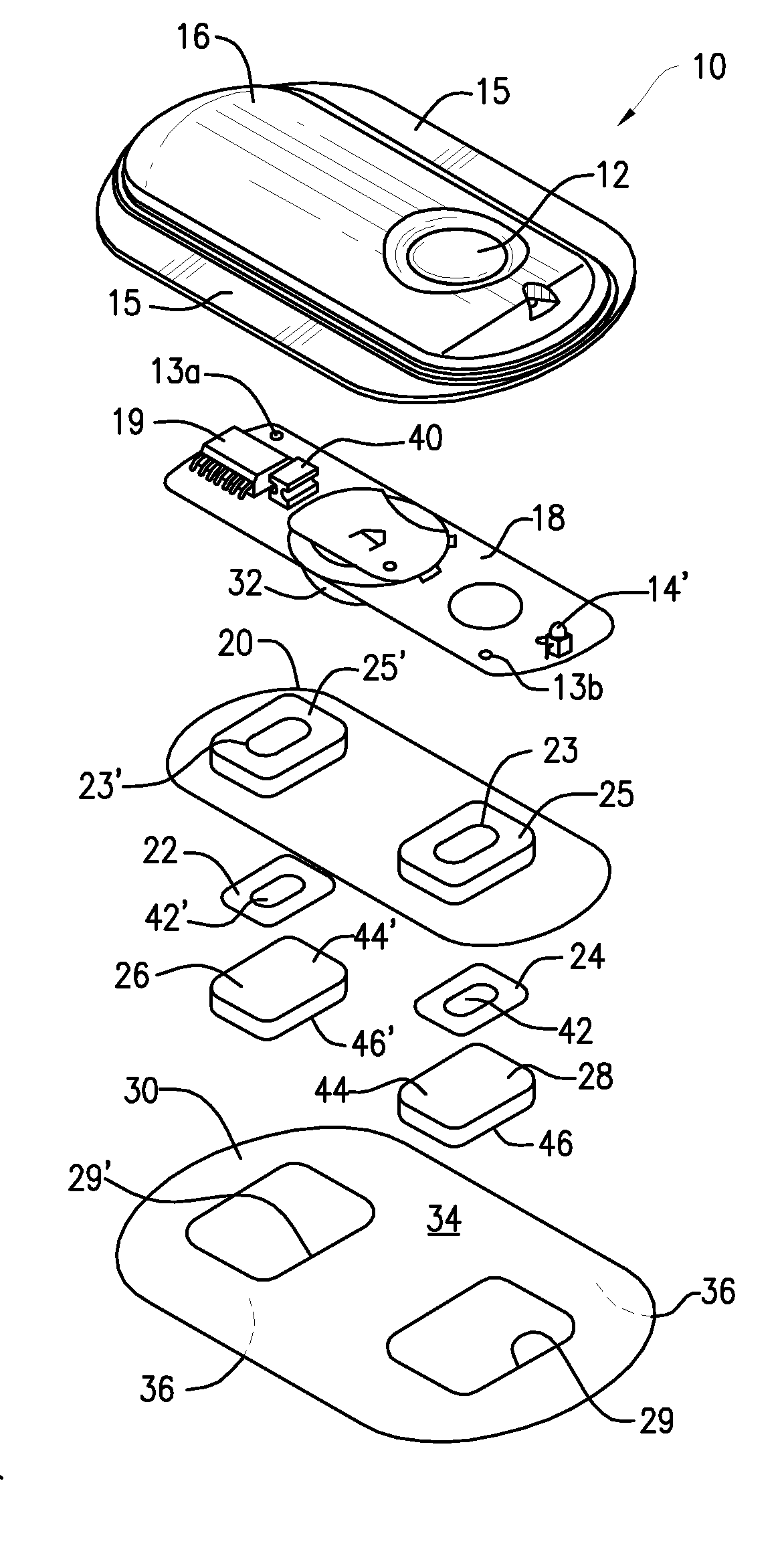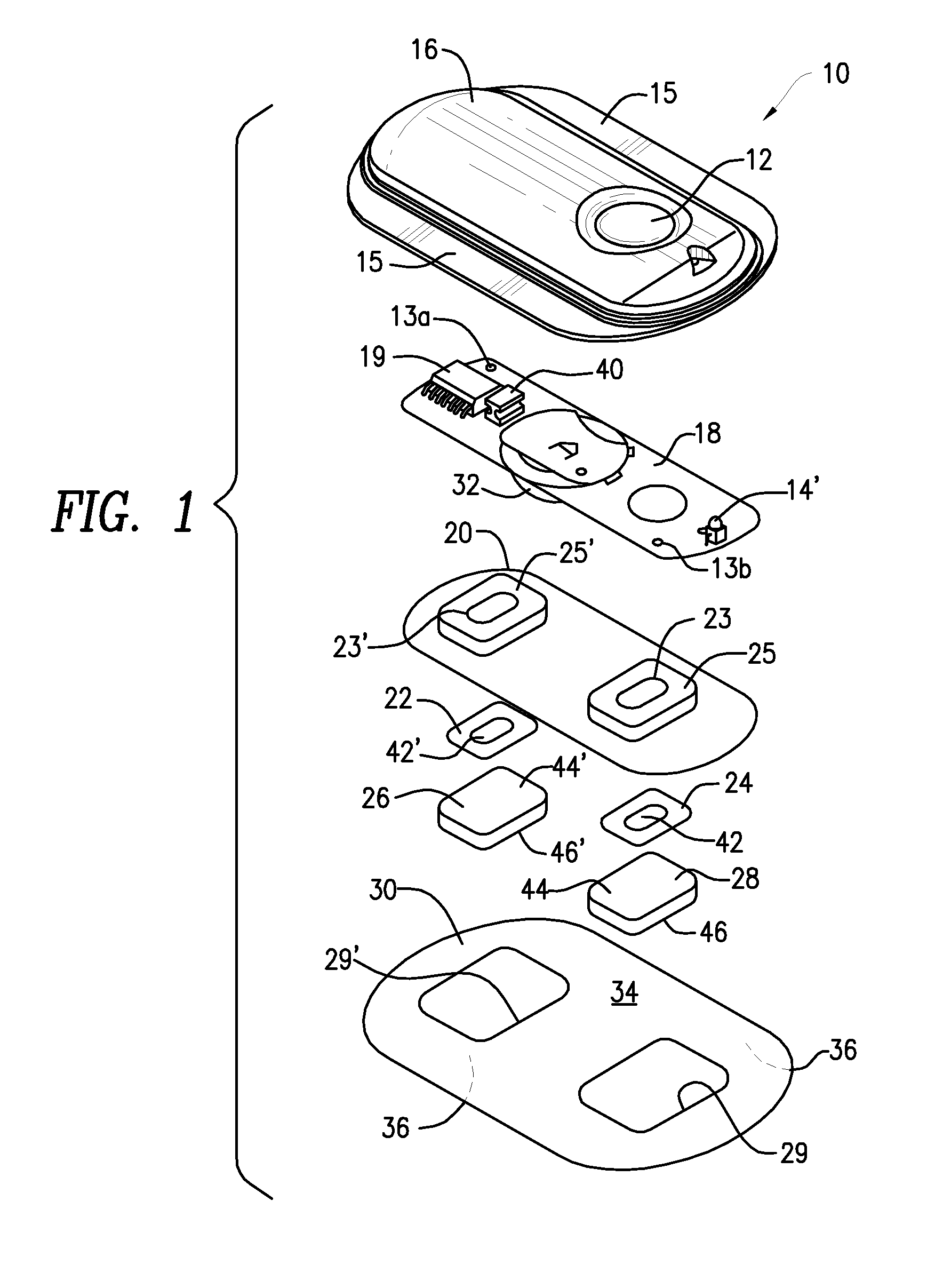Method and Device for Transdermal Electrotransport Delivery of Fentanyl and Sufentanil
- Summary
- Abstract
- Description
- Claims
- Application Information
AI Technical Summary
Benefits of technology
Problems solved by technology
Method used
Image
Examples
example 1
[0056]The following experiment was conducted in order to determine the necessary minimum concentration of fentanyl salt in a donor reservoir of a transdermal electrotransport delivery device in order to ensure that the transdermal electrotransport fentanyl flux remains approximately proportional to the level of applied electrotransport current. Anodic donor reservoir gels, having varying loadings of fentanyl HCI, were prepared having the following composition:
Material(wt %)Water81.3PVOH15.0Fentanyl HCI1.7Polacrilin0.10.5 N NaOH1.9
[0057]The combination of Polacrilin and NaOH acted as a buffer to maintain the pH of the gels around 5.5. Polacrilin {also known as Amberlite IRP-64) is sold by Rohm & Haas of Philadelphia, Pa. The materials were mixed in a beaker at elevated temperature of 90° C. to 95° C., poured into foam molds and stored overnight at −35° C. to cross-link the PVOH. The gels had a skin contact area of 2 cm2 and a thickness of 1.6 mm. The gels had a fentanyl HCI concentra...
example 2
[0062]The following study was conducted to determine the amount of fentanyl hydrochloride drug loading which is necessary to prevent silver migration, resulting in transient epidermal discoloration, from a transdermal fentanyl electrotransport delivery device having a donor reservoir gel weighing about 0.6 g and having a skin contact area of about 2.8 cm2, which device is worn for a period of up to 24 hours and which applies an electrotransport current of 240 μA (ie, a current density of 87 μA / cm2) over a delivery interval of about 10 minutes to deliver a 40 μg dose, and which can deliver up to 80 of such doses over the 24 hour wearing period. Thus, the device has the ability to deliver up to 3.2 mg of fentanyl (80×40 μg=3.2 mg) for therapeutic purposes.
[0063]Fentanyl HCI-containing polyvinyl alcohol (PVOH) hydrogel-based donor reservoirs, each reservoir having a total weight of about 0.15 g, were made with the following composition:
Material(wt %)Water80.8PVOH15.0Fentanyl HCI2.0Pola...
example 3
[0067]The following studies were conducted to determine the transdermal electrotransport dosing level required to achieve an acceptable level of analgesia in human patients suffering from moderate to severe postoperative pain. The study was conducted in 132 post-operative male and female patients who were expected to have moderate to severe pain after surgery, including orthopedic (shoulder, knee, long bone) and abdominal (urological, gynecological) surgeries. The patients wore one of two different electrotransport fentanyl HCl delivery devices on the upper arm for 24 hours following surgery. Both devices applied electrotransport current for a delivery interval of 10 minutes upon activating a push button switch on the device. The first device, worn by 79 of the 132 patients, applied an electrotransport current of 150 μA which delivered an average fentanyl dose of 25 μg over the 10 minute delivery interval. The second device, worn by 53 of the 132 patients, applied an electrotranspor...
PUM
| Property | Measurement | Unit |
|---|---|---|
| Time | aaaaa | aaaaa |
| Mass | aaaaa | aaaaa |
| Concentration | aaaaa | aaaaa |
Abstract
Description
Claims
Application Information
 Login to View More
Login to View More - R&D
- Intellectual Property
- Life Sciences
- Materials
- Tech Scout
- Unparalleled Data Quality
- Higher Quality Content
- 60% Fewer Hallucinations
Browse by: Latest US Patents, China's latest patents, Technical Efficacy Thesaurus, Application Domain, Technology Topic, Popular Technical Reports.
© 2025 PatSnap. All rights reserved.Legal|Privacy policy|Modern Slavery Act Transparency Statement|Sitemap|About US| Contact US: help@patsnap.com



